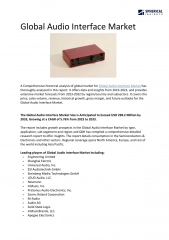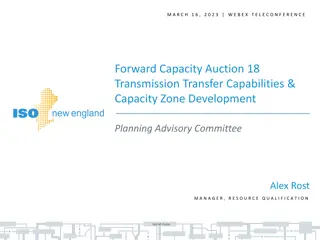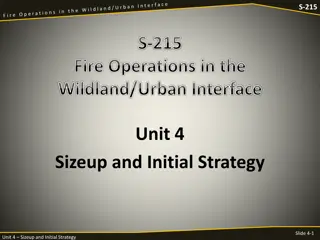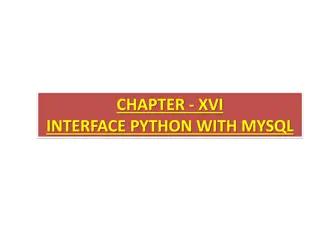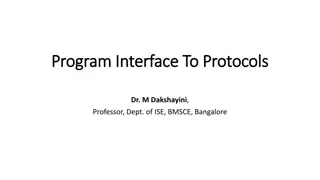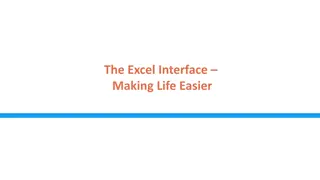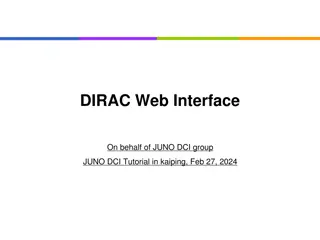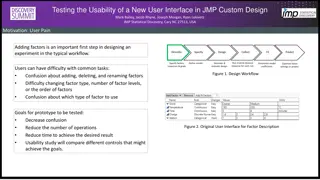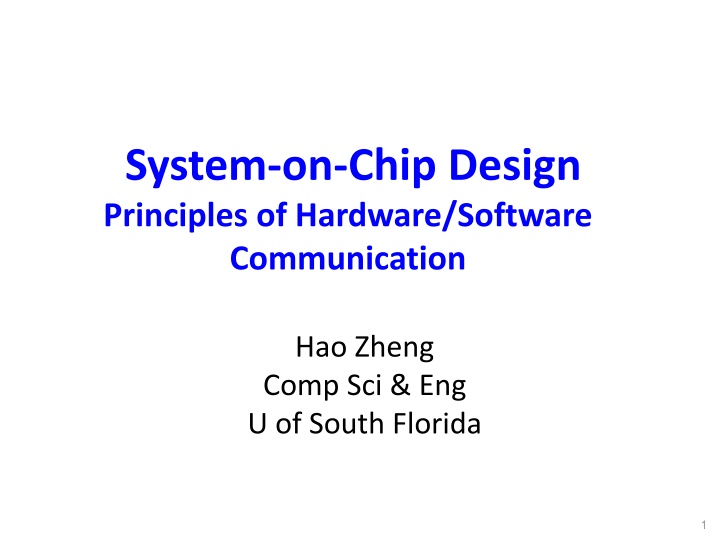
Principles of System-on-Chip Design and Hardware/Software Communication
Explore the key principles of system-on-chip design, hardware/software communication, synchronization schemes, and semaphore usage. Learn about one-way and two-way handshakes for efficient data transfer in communication-constrained systems.
Download Presentation

Please find below an Image/Link to download the presentation.
The content on the website is provided AS IS for your information and personal use only. It may not be sold, licensed, or shared on other websites without obtaining consent from the author. If you encounter any issues during the download, it is possible that the publisher has removed the file from their server.
You are allowed to download the files provided on this website for personal or commercial use, subject to the condition that they are used lawfully. All files are the property of their respective owners.
The content on the website is provided AS IS for your information and personal use only. It may not be sold, licensed, or shared on other websites without obtaining consent from the author.
E N D
Presentation Transcript
System-on-Chip Design Principles of Hardware/Software Communication Hao Zheng Comp Sci & Eng U of South Florida 1
System Structural Model Mem CPU P 1 P 2 Arbiter Bridge P 3 P5 P 4 H W H W 2
Synchronization Schemes Synchronization is necessary for effective communications 4
Semaphores Used to control of accesses to shared resource. Two ops on semaphore S: P(S): acquire S. V(S): release S. thread 2: P(S); x = x 2; V(s); thread 1: P(S); x++; V(s); 6
entity two { short_delay(); while (1) { P(S); rd = shared_data; }} entity one { P(S); while (1) { short_delay(); shared_data = ; V(S); }} Semaphores int shared_data; semaphore S; 7
Semaphores Semaphores can only guarantee exclusive access to shared resources. difficult to control precise data transfer Multiple semaphores can be used, but not elegant. Handshaking: a signaling protocol between two entities to coordinate data transfers. Can handle entities with different speeds. 8
Two-Way Handshake for Data Transfer req ack data Dest Src clk req ack XXX X XXXXX data d1 11
Communication Constrained vs Computation Constrained System performance should consider both computation performance and communication overhead. 12
Communication Constrained vs Computation Constrained 13
Tight and Loose Coupling Coupling: the degree of interactions between two components 14
Dedicated vs Shared Interfaces 9 Principles of Hardware/Software Communication Nature of coupling affects the organization of HW/SW interfaces 282 Table 9.2 Comparing a coprocessor interface with a memory-mapped interface Coprocessor interface Processor-specific Point-to-point Fixed Higher Memory-mapped interface On-chip bus address Shared Variable Lower Factor Addressing Connection Latency Throughput tight coupling loose coupling describe in detail in the next Chapters are called memory-mapped interface and coprocessor interface respectively. Table 9.2 compares the key features of these two interfaces. These two interfaces each take a different approach to synchronization. In the case of a coprocessor interface, synchronization between a hardware module and software is at the level of a single instruction. Such a coprocessor instruction typically carries both operands (from software driver to hardware coprocessor) as well as result (from hardware coprocessor to software driver). In the case of a memory-mapped interface, synchronization between a hardware module and software is at the level of a single bus transfer. Such a bus transfer is unidirectional (read or write), and either carries operands from the software driver to the hardware coprocessor, or else results from the hardware coprocessor to the software driver. Clearly, the use of a coprocessorinterface versusa memory-mappedinterface imply a different style of synchronization between hardware and software. A given application can use either tight-coupling or loose-coupling. Figure 9.10 shows how the choice for loose-coupling of tight-coupling can affect the latencies of the application. The left side of the figure illustrates a tight-coupling scheme. The software will send four separate data items to the custom hardware, each time collecting the result. The figure assumes a single synchronizationpoint which sends the operand and retrieves the result. This is the scheme that could be used by a coprocessor interface. The synchronization point corresponds to the execution of a coprocessor instruction in the software. The right side of the figure illustrates a loosely coupled scheme. In this case, the software provides a large block of data to the custom hardware, synchronizes with the hardware, and then waits for the custom hardware to complete processing and return the result. This scheme would be used by a memory-mapped interface, for example using a shared-memory. Loosely-coupled schemes tend to yield slightly more complex hardware designs because the hardware needs to deal more extensively with data movement between hardware and software. On the other hand, tightly-coupled schemes lean more on the software to manage overall system execution. Achieving a high degree of parallelism in the overall design may be easier to achieve with a loosely-coupled scheme than with a tightly-coupled scheme. 15
Reading Guide Chapter 9, the CoDesign book. 16

